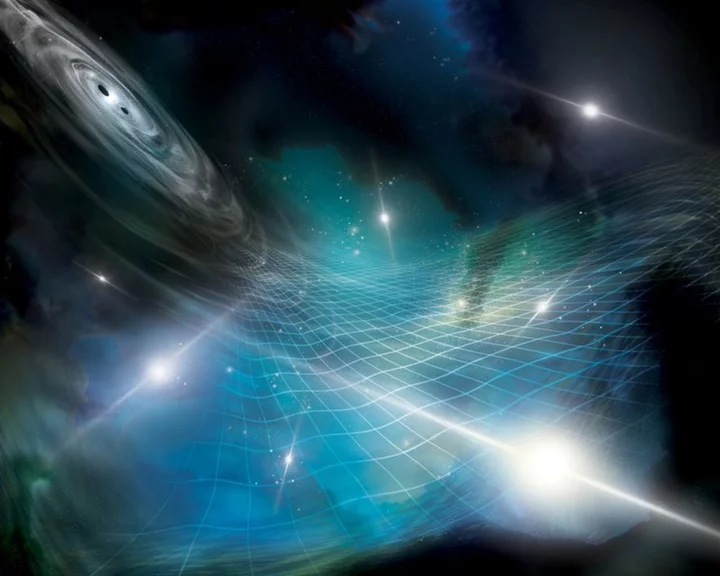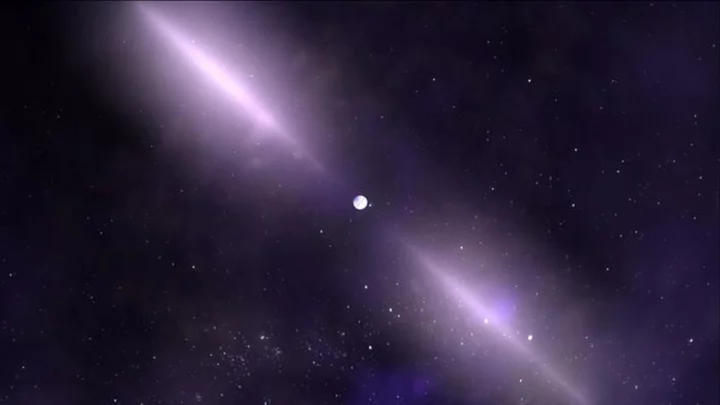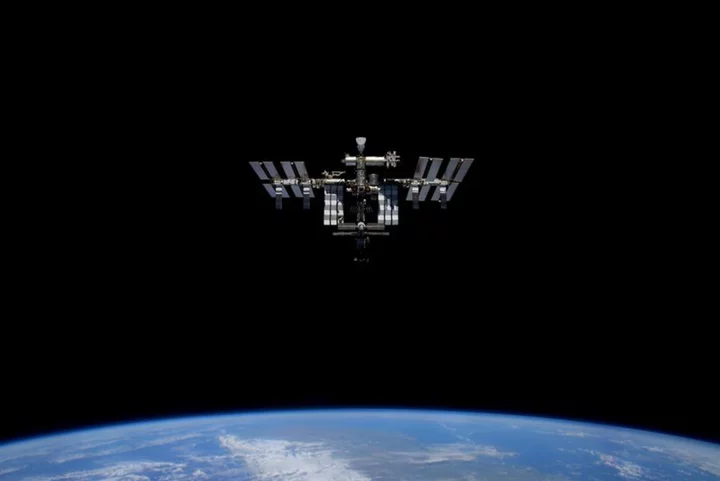
Biden calls on US colleges to consider adversity during admission process
By Nandita Bose WASHINGTON President Joe Biden on Thursday urged colleges to take into account challenges that applicants
2023-06-30 01:21

Harvard says it will comply with US Supreme Court ruling, preserve its values
WASHINGTON Harvard University said on Thursday it will comply with the U.S. Supreme Court ruling that struck down
2023-06-30 00:57

Explainer-What the Supreme Court's ruling on affirmative action means for colleges
By Joseph Ax The U.S. Supreme Court on Thursday struck down race-conscious policies in college admissions, ending decades
2023-06-29 23:57

Key voices in the decades-long debate over affirmative action
By Joseph Ax, Sharon Bernstein and Gabriella Borter For decades, selective U.S. colleges and universities have considered, among
2023-06-29 22:48

Virgin Galactic rocket plane poised for first commercial flight to edge of space
By Jose Luis Gonzalez and Steve Gorman TRUTH OR CONSEQUENCES, New Mexico A twin-fuselage jet stood ready on
2023-06-29 16:26

Scientists discover that universe is awash in gravitational waves
By Will Dunham WASHINGTON Scientists on Wednesday unveiled evidence that gravitational waves, the ripples in the fabric of
2023-06-29 10:58

Scientists find entirely new kind of gravitational wave in unprecedented breakthrough
Scientists have “heard” a chorus of gravitational waves rippling through the universe, in what they say is an unprecedented finding that could fundamentally change our understanding of the universe. The discovery, described in a range of newly published journal papers, suggests that spacetime is being rocked by intensely powerful gravitational waves all the time. Those waves carry a million times more energy than the one-off bursts of gravitational waves that were detected from a black hole and were themselves hailed as a major breakthrough in our understanding of the universe. The new results suggest that everything is being slowly shrunk and expanded by a new kind of gravitational wave as they pass through our galaxy. Scientists describe it as being akin to hearing a “symphony” of waves echoing through the universe. “It’s like a choir, with all these supermassive black hole pairs chiming in at different frequencies,” said Chiara Mingarelli, a scientist who worked on the new findings while an associate research scientist at the Flatiron Institute’s Center for Computational Astrophysics. “This is the first-ever evidence for the gravitational wave background. We’ve opened a new window of observation on the universe.” The new findings have been described in a range of journal articles, published in different academic journals. The research is the result of 25 years of observations from six of the world’s most sensitive radio telescopes, and have been simultaneously published by different collaborations across the world. The findings are not only notable in themselves. They also offer the opportunity to find out some of the universe’s secrets, since they can be used to find information about the binary black holes that form when galaxies merge, for instance. “These results signify the beginning of an exciting journey into the Universe, where we aim to unravel its mysteries,” Michael Keith, a lecturer at Jodrell Bank Centre for Astrophysics, UK, and contributor to one of the new studies, published in Astronomy and Astrophysics. “After decades of tireless work by hundreds of astronomers and physicists worldwide, we are finally detecting the long-awaited signature of gravitational waves originating from the distant Universe.” Scientists made the discovery by analysing observations of pulsars, which are extinguished stars that can be used as reliable clocks in the distant universe. By bringing together such a large amount of detailed data, researchers were able to measure those pulsars with very high accuracy, allowing them to measure gravitational waves at a far larger scale than using detectors on Earth. “Pulsars are excellent natural clocks. We exploit the remarkable regularity of their signals to detect subtle changes in their rhythm, enabling us to perceive the minute stretching and squeezing of space-time caused by gravitational waves originating from the far reaches of the Universe,” said David Champion, a senior scientist at the MPIfR in Bonn, Germany, and contributor to the study, in a statement. For now, researchers are only able to “hear” the vast choir, rather than the individual pulsars that make up its singers. But together they are much louder than expected, meaning that there may be more or more heavy supermassive black holes to be found in the universe. Read More Astronomers find zombie planet that ‘shouldn’t exist’ Nasa to begin Moon mining within next decade Nasa rover spots bizarre donut shaped rock on Mars
2023-06-29 08:18

Astronomers find zombie planet that ‘shouldn’t exist’
Scientists have found a new planet they shouldn’t exist, after it seemed to miraculously survived the violent death of its star. Many planets, including our own, face almost certain doom when their stars reach the end of their lives and engulf them. When our own Sun dies, for instance, it will expand to 100 times and swallow the Earth. But the new study offers hope that at least some of those planets are able to survive. The newly discovered world, a Jupiter-like planet known as Halla, managed to survive the demise of its star Baekdu, in what should have been certain death. Astronomers found the planet and discovered through follow-up observations that Baekdu had previously expanded into a red giant. When it did, it would have inflated up to 1.5 times the distance between it and Halla, engulfing the star, and then shrunk back down to its current size. Despite that dramatic and violent event, Halla has managed to persist, sticking around so that astronomers could see it using telescopes in Hawaii. “Planetary engulfment has catastrophic consequences for either the planet or the star itself - or both. The fact that Halla has managed to persist in the immediate vicinity of a giant star that would have otherwise engulfed it highlights the planet as an extraordinary survivor,” said Marc Hon, the lead author of the study. The findings are published in a new paper, ‘A close-in giant planet escapes engulfment by its star’, in the journal Nature today. Halla was found in 2015, using what scientists call the “radial velocity method”, which monitors how stars move and uses that to understand how they might be tugged around by the planets that orbit them. In the years since, scientists found that the planet must have been engulfed by the star, and conducted follow-up observations to better understand the planet. Those observations confirm that the planet had been in its stable orbit for over a decade, and that it really existed. “Together, these observations confirmed the existence of the planet, leaving us with the compelling question of how the planet actually survived,” said IfA astronomer Daniel Huber, second author of the study. But scientists still do not know how it survived. One possibility is that it started on a larger orbit before moving closer to its star, but astronomers believe that is unlikely. Another is that Baekdu was actually once two stars. They may have merged during their death, sparing Halla from being merged at all, by stopping them getting big enough to engulf it. And a separate possibility is that Halla was actually born out of the collision of the two stars. That might have produced a gas cloud that actually gave birth to Halla, and so it may be the result of the demise of its star rather than a survivor of it. Read More Nasa rover spots bizarre donut shaped rock on Mars Strange alien planet could be trapped in edge of the Solar System SpaceX Starship completes six-engine static test fire at base in Texas
2023-06-28 23:26

Biden to sign executive order expanding access to contraception
WASHINGTONU.S. President Joe Biden on Friday will sign an executive order designed to protect and expand access to
2023-06-23 17:21

Study reveals how immune system of astronauts breaks down
By Will Dunham WASHINGTON Evidence is growing about the many ways that traveling in the microgravity environment of
2023-06-22 12:49

Our nearest supermassive black hole ‘became active’ and became a million times intense, scientists say
Our nearest supermassive black hole awoke from a “period of dormancy”, becoming a million times more intense, scientists have said. The supermassive black hole, known as Sagittarius A*, sits at the heart of the Milky Way and is about four million times more massive than the Sun. About 200 years ago, it ate cosmic objects that got too close to it and became vastly more bright, scientists found. The increase in brightness is as if a single glow-worm hidden in a forest suddenly became as bright as the Sun, according to researchers. The intense event was discovered by scientists who picked up an X-ray “echo” from the event. It also explains the intense bright shine of galactic molecular clouds around the black hole – scientists say they are reflecting those X-rays that came out of the black hole towards the start of the 19th century. The work is described in a new paper, ‘X-ray polarization evidence for a 200 years-old flare of Sgr A*’, published in Nature. Read More Jupiter is struck by neon green lightning bolt in stunning Nasa photo Humans have affected the Earth’s rotation, scientists say First disabled astronaut says his selection sends ‘powerful message’
2023-06-21 23:18

How U.C. Berkeley tried to buoy enrollment of Black students without affirmative action
By Sharon Bernstein BERKELEY, California In the 25 years since California voters banned all consideration of race in
2023-06-18 18:28
